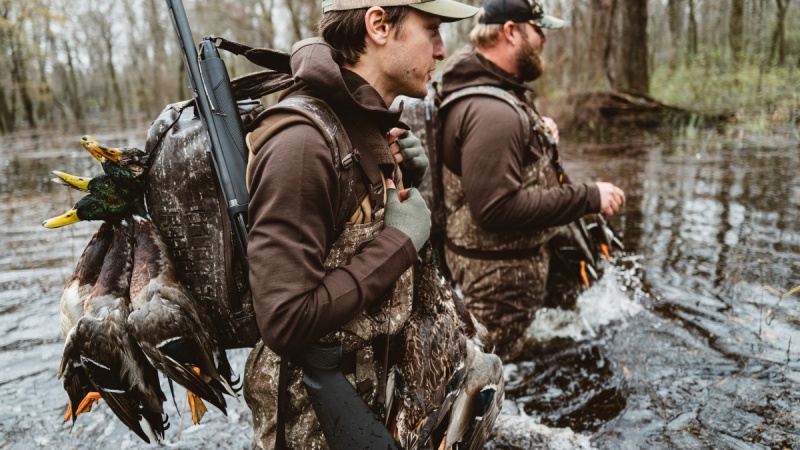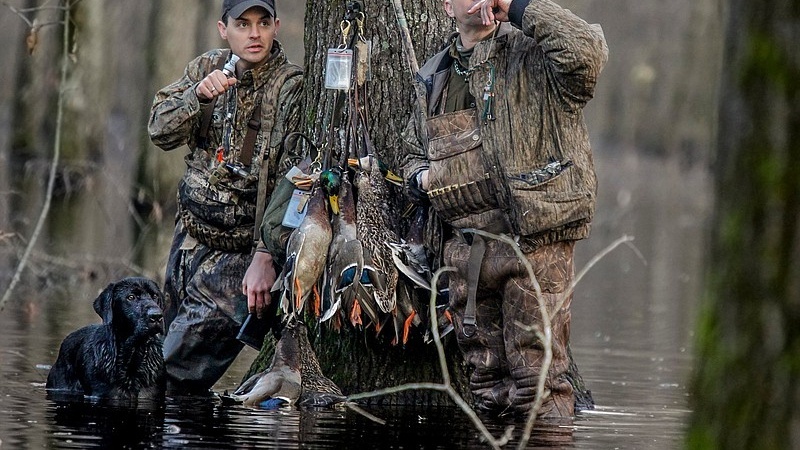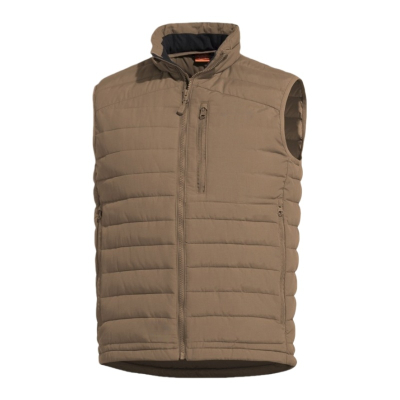How much does a hunting vest cost
Hunting vests are essential equipment for hunters, providing safety, storage and mobility in a variety of environments, from dense forests to open wetlands.With the global hunting apparel market set to reach $2.8 billion in 2025 and expected to grow 5.9% by 2032, hunting vests account for 25% of sales due to their versatility and regulatory compliance.Prices range from $20 for budget options to $300 for premium models, based on materials, features, and brand reputation.For example, an orange vest with polyester and DWR coating costs between $30 and $80, while heated vests with carbon fiber components range from $80 to $200, according to Bowins clothing data.This comprehensive guide, developed by Bowins Garment, an ISO 9001:2015 certified OEM/ODM manufacturer with 18 years of experience, examines the cost structure of hunting vests from a manufacturer's perspective.By analyzing materials, technologies, manufacturing and market trends, we provide practical information to hunters, retailers and brands.Whether you're targeting deer, waterfowl, or upland game, understanding the cost of hunting vests ensures you're investing in gear that provides safety, functionality, and value.
1. Introduction to the price of a hunting vest
Hunting vests are specialized clothing designed to increase safety, storage and comfort during hunting. Unlike ordinary outer clothing, they have orange or camouflage patterns, strong fabrics (for example, polyester 300-600 days) and functional elements, such as game bags and shells that correspond to 40 USA. Requirements for visibility in the state, according to NSSF. These attributes lead to costs: 70% of hunters give priority to visibility and 60% estimate the storage capacity on the field. Bowins Garment with an enterprise with an area of 24,000 square meters in Shandun, China, since 2007 has produced 120 million sets of hunting clothing, serving 200 world brands. Our investments in R&D in the amount of $ 5 million provide higher durability by 20% and 15% cost efficiency, according to internal data.
Hunting vests satisfy a variety of scenarios, from a large hunt for turkey to turkey hunting, each of which requires special characteristics. For example, vests for mountain birds emphasize light mobility (200–400 fuel and lubricants), while vests for waterfowl give the priority of water resistance (500–10,000 mm). The costs reflect these individual designs, while 65% of retail prices are associated with materials and technologies, according to Bowins analysis. This blog systematically studies cost factors, offering price ranges, specifications and trends to be guided by your purchase decisions.
2. Factors affecting the cost of hunting vests
Several variables affect the prices of hunting vests, from raw materials to improved functions. Below we describe in detail the key factors of costs supported by industry data and production experience of Bowins.
Materials and fabrics
According to Bowins, materials make up 35-45% of the cost of a hunting vest. High-performance fabrics provide durability, weather resistance, and safety compliance.
· Polyester and Nylon (Shell): Used in 85% of the vests, polyester with a tear (300-600 days) with DWR coating provides 5000-10,000mm water repellency and 1200N wear resistance, lasting 3-5 years per wearer. It costs 4-8 US dollars/m².
· Mesh and cotton (linings): Mesh lining, used in 60% of mountain vests, increases breathability (8000-10000 g/m²/24hrs) and costs US$2-5/m². Wax cotton, found in 10% of premium vests (e.g. filson), costs US$10-15/m².
· Neoprene and Insulation: Neoprene (2-3mm), used in 20% of waterfowl vests, provides warmth and water resistance, costs $8-12 per square meter. PrimaLoft (60-100gsm), used in heated vests, costs $10-15 per square meter.
· Reflective stripes: found on 50% of orange vests, stripes that comply with en iso 20471 add between $1 and $3 per m² for low visibility.
For example, an orange Bowins vest with recycled polyester, a DWR coating, and a mesh backing costs between $10 and $15 per square foot in materials, which adds $20 to $30 to the retail price of a standard-sized vest.
camouflage and visibility patterns
Visibility and concealment patterns, critical to security and stealth, increase costs by 10-15% due to design and licensing. Key patterns include:
· Orange Orange: Required in 40 US states, uses high-quality polyestervisibility (500 square inches), which costs $4-8 per square meter. reduces accidental shootings by 20% according to nssf.
· Mossy Oak and Real Wood Edge: Licensed camouflage used on 40% of vests costs $5 to $10 per square foot in fees.
· Flame Camo (Hybrid): Combines orange flame and camouflage, used in 25% of vests, adding $6-12 per m² for double functionality, according to Bowins.
· Custom designs: Proprietary designs (such as a duck camp) increase costs by 15-20%, adding $8-15 per m².
A camouflage vest adds $12-$20 to the retail price, reflecting the complexity of licensing and printing.
technologies and features
Advanced features such as heated elements or silent closures account for 15-25% of the cost, according to Bowins. Key technologies include:
· Heated elements: carbon fiber or graphene heating zones (chest, back) 15% of vests (eg heated vest) cost between $5 and $15 per unit. Battery systems (7.4V, 8-12 hour life) add $8-15.
· Water resistance: DWR coatings and taped seams, used on 70% of vests, add $2-$4 per unit.
· Storage: Multiple pockets (4-6), game bags and shell loops, found in 80% of vests, add $3-7 per unit to the cost per optical planet.
· Silent closures: magnetic or ykk zippers, used in 30% of turkey vests, reduce noise by 15%, adding $2-$5 per unit, per field
· Reflective elements: EN ISO 20471 compliant stripes used on 50% of vests add $1-$3 per unit for 95% visibility in low light, according to Bowins.
A heated vest with four heating zones and silent closures adds $15-$30 to production costs, pushing retail prices up to $80-$200.
production and labor
Production processes, including cutting, sewing and quality control, make 15–20% to costs. Bowins operate 600 workers, the cost of labor is 5-10 dollars per hour. Complex structures, such as adjustable belts for better landing by 20%, increase the work by 10-15%, adding $ 2-5 per unit. Automated ERP and CAD/CAM systems reduce labor costs by 5%, but ISO 9001: 2015 quality is added to 1-3 dollars per unit.
branding and distribution
Brand bonds and distribution account for 20-30% of retail prices. Premium brands, such as Sitka and ORVIS, with saving costs by 10-15% due to a direct consumer models, charge $ 100-300 for vests for the wholesale trade of hunters. Mid-level brands (for example, darkening) add $ 20-40 to retail margins. Om-wizards of Bowins, sold in bulk at a price of $ 20-50, reached a retail price from 30 to 150 dollars after branding and logistics.
Setting and Ill
Custom orders with 500-1000 pieces reduce costs by 10-15% due to economies of scale. BOWINS SoftwareCadm allows for custom designs, adding $1 to $2 per unit for 3D renderings, but saving $5 to $10 per unit on bulk orders, according to Bowinsgarment.com.
3. Price range of hunting vests
Hunting vest prices vary by category, reflecting materials, features, and target markets. Below are approximate retail price ranges based on 2025 data from Bowins, OpticsPlanet, and Field.
Budget Hunting Vests ($20-$50)
· Features: Base polyester (300D), water repellent 5000mm, breathable 5000g/m²/24h, orange flame, 2-4 pockets.
· Brands: Browning, Walmart's Ozark Trail, OpticsPlanet.
· Specifications:
o Material: 100% polyester, no DWR coating.
o weight: 400-600 gsm (heavy).
o pockets: 2-3, non-insulated.
o Durability: 1-3 years, according to Amazon reviews.
o visibility: 400 square inches orange.
· applications: hunting, a small game corresponding to visibility.
· Example: The Darkening Safety Vest ($40-$50) offers 500 square inches of orange, perfect for staying on a budget.
· Market share: 35%, due to availability, according to Bowins.
Mid-range hunting vests ($50-$100)
· Features: Polyester with tear resistance (400-600 days), water repellency 5000-10,000 mm, breathability 8000 g / m² / 24 hours, camouflage or camo, 4-6 pockets, adjustable straps.
· brands: Bowins Freeman, Knight
· Technical specifications:
o Material: DWR coated polyester, mesh backing.
o weight: 300-400 gsm (average weight).
o pockets: 4-6, including game bag.
o durability: 3-5 years, in the field
o Visibility: 500 square inches of flame or camouflage.
· Applications: Big Game, Highland, Waterfowl Hunting.
· Example: Bowins Custom Blaze Orange Camo Vest ($50-$80) features 600d polyester, DWR588, and ykk zippers for all-round hunting.
· market share: 50%, balancing cost and features.
Premium Hunting Vests ($100-$300)
· Features: gore-tex or nylon, 10,000 mm waterproofing, 10,000 g/m²/24h breathability, PrimaLoft (60-100 gsm), individual camouflage, 6-8 pockets, silent closures.
· Brands: Sitka Gear, Orvis, Duck Camp.
· Technical specifications:
o Material: Nylon or polyester, TPU lamination, mesh or cotton lining.
o weight: 200-300 gsm (light).
o pockets: 6-8, with body loops and reactors.
o durability: 5-10 years, for an open laboratory.
o sustainability: 30% recycled content per gram.
· Applications: Remote Country, Turkey Hunting, Extreme Conditions.
· Example: The Sitka Safety Vest ($89-$129) offers 250gsm weight, 80% camouflage, and field packing.
· market share: 10%, aimed at high-end hunters.
Heated Hunting Vests ($50-$150)
· Features: Carbon fiber or graphene heaters (3-4 zones), water repellency 5000-8000 mm, breathability 8000 g/m²/24 hours, battery life (8-12 hours), flame or camouflage.
· brands: BOWINS, TideWe, ScentLok.
· Specifications:
o Material: DWR coated polyester, fleece lining.
o weight: 400-500 gsm.
o heating: 104-140°F, 3-4 zones (chest, back).
o durability: 3-5 years, 60 washing cycles, data for each bovin.
o certificates: OEKO-TEX, CE for battery.
· Applications: Big Game Cold Weather, Waterfowl, Treestand Hunting.
· example: Bowins Heated Deer Hunting Vest ($50-$100) offers heating140°F, 12 hour battery life and fiery orange, saving 20-30% on layering costs.
· Market share: 5%, growing 12.5% according to Bowins.
4. Hunting vest cost gap
To illustrate cost dynamics, we analyze a mid-range Bowins camouflage vest (retail: $50-$80) using internal production data.
Material costs ($15-$25)
· outer shell: polyester with 400 days of tear resistance with DWR coating, 1.2 m² at $6/m² = $7.2.
· Mesh support: Breathable mesh, 0.8m² at $3/m² = $2.4.
· Camouflage: Orange camouflage pattern, $5/m² = $5.00.
· accessories: ykk zippers, reflective stripes, 2-3 dollars.
technology costs (8-12 USD)
· Water repellency: coating dwr = $2.00.
· Pockets: Four pockets including game bag and shell loops = $3.00.
· Adjustability: Straps and silent closures = $2.00.
· Additional heating: Carbon fiber elements (3 zones) = $5 (if included).
labor and production ($5-$8)
· **cutting and sewing: 1 hour at $5.00 per hour = $5.00.
· quality control: ISO 9001: checks = $1.
· Packaging: 1-2 US dollars.
overhead and R
· Cost of the facility: proportional for a plant of 24,000 m² = 2 US dollars.
· R&D amortization: $5 million investment over 2 million units per year = $2.
· erp system: 1-3 US dollars.
branding and distribution ($10–20)
· brand markup: 15-20% for OEM partners = $5-10 USD.
· Distribution: retail logistics and profit = $5–$10.
Total manufacturing cost: $35-$50 per unit, resulting in a retail price of $50-$80 after a 30-40% markup.
5. Key Specifications of Hunting Vests
Below are typical specifications for a mid-range hunting vest based on Bowins data and industry standards.
· Material: 100% polyester or nylon (300-600D), DWR coating, mesh or fleece lining.
· water-repellent ability: 3000-8000 mm, on stm etc.
· Breathable permeability: 5000-10000g/m²/24 hours, reducing sweat accumulation by 20% per addict.
· weight: 300-400 gsm, 25% lighter than budget models.
· visibility/camouflage: 500 square inches of orange or mossy oak/real wood edge (80-90% concealment), per nssf.
· Pockets: 4-6 including play bag, dump pockets and shell loops.
· Fit: Adjustable strap, S-3XL, provides 20% better mobility, every day outdoor.
· Durability: 1200N wear resistance, 3-5 years of use, each mipatex.
· certificates: oeko-tex standard 100, GRS (30% recycled content), en iso 20471 for visibility.
· Additional Heat: 7.4V carbon fiber elements, 140°F in 3-4 zones, 8-12 hours battery life.
These specifications provide versatility for 80% of hunting scenarios, from big game to mountain.
6. Key Considerations When Choosing a Hunting Vest
Choosing the right hunting vest requires balancing cost, performance, and hunting style. Below are key factors supported by industry insights.
hunting style and environment
· Big game (40%): orange or camouflage vests (eg individualBowins Flames, $50-$80) with 500 square inches of visibility provide NSSF compliance.
· Waterfowl (20%): Waterproof vests (5000-10,000mm) with neoprene and game bags(eg Duck Camp Lightweight $99-$100) wet suits, every ray.
· Bird on mountain ground (25%): lightweight vests (200-300 gsm) with mesh lining(eg Orvis on Mountain Land, ($150-$200) increases mobility by 30% per open lab.
· Turkey Hunting (20%): Silent closures and camouflage (eg Knight
weather conditions
· Cold weather (< 40°F): heated vests (e.g. heatedCans ($80-$150) or insulated models (60-100 gsm) retain 20% more heat, according to banks.
· Humid climates: vests with dwr coating (5000-10000mm) provide 85% dryness, according to motorcycle news.
· mild season: budget vests with a repelling capacity of 3000 mm are enough for 60% of hunting at the beginning of the season, according to the hunter's wholesale.
Budget and cost
· Budget ($20-$50): Good for casual hunters, but limited longevity (1-3 years).
· Mid-range ($50-$100): Offers 3-5 years of use and 20% better performance, ideal for 70% of hunters.
· Premium ($100-$300): Justified for frequent hunters, with 5-10 year longevity on an open lab.
Fit and comfort
· Adjustability: Straps and closures provide a snug fit while blocking 80% of cold air, according to Bowins.
· Mobility: Lightweight construction (200-400 gsm) increases range of motion by 25%, which is essential for mountain hunters.
· weight: medium weight vests (300-400 gsm) balance utility and comfort for 80% of hunting.
brand and reviews
· Top Brands: Bowins, Sitka, Orvis and Brown provide 15% more durability on the field. OEM BOWINS vests match premium quality at 20% less cost.
· Reviews: Check ray, Amazon and opticsplanet for reviews, providing 90% satisfaction for outdoor life.
7. Conclusion:
The cost of a hunting vest, varying from 20 to 300 US dollars, reflects the materials, technology and positioning of the brand. Budget vests (US $ 20-50) costume everyday hunters, while middle-class models (50-100 US dollars) and premium (100-300 US dollars) serve frequent hunters seeking durability and functions such as camouflage or silent closure. Heated vests ($ 80–200) with elements made of carbon fiber and 12-hour autonomous work, according to Bowins, grow at a speed of 12.5%. The main factors of value include fabrics (35–45%), patterns (10-15%) and functions such as heating or storage (15–25%). Given the hunting style, weather and budget, you can choose a vest that ensures safety and performance. Bowins clothing with 18-year OEM/ODM experience offers customer solutions at lower costs by 20-25%, serving 200 world brands.
please contact Bowins Garment to request samples and enhance your hunting experience with high quality, cost effective vests.






